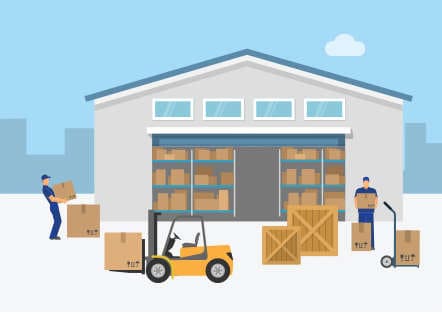What Is The Importance Of SCAC?
The SCAC is a unique two-to-four-letter code used to identify transportation carriers and companies. Developed by The National Motor Freight Traffic Association (NMFTA) in the 1960s to help transport carriers computerize their data and records.
The SCAC code allows the registration of your shipping documents (e.g., freight bills, bills of lading, purchase orders, packing lists) within a digital computer system for ease of access. It is vital to keep your computer systems optimized to use SCAC.
Once these records are digital, stakeholders can access important documents related to your company and operations. These digital records also allow you to track your shipment at every stage of the journey. SCAC is mandatory in certain circumstances. It efficiently monitors transportation companies across various transport modes, such as motor vehicles, railway lines, and waterways.

Who Needs A SCAC?
U.S. government agencies require carriers and transportation companies to apply for and renew their SCAC codes annually. Customs and border protection agencies also use this code to monitor carriers entering the country by accessing digitized carrier documentation.
If you are a carrier crossing the U.S. border, you must update your SCAC code so that proper government authorities can efficiently identify your business. A SCAC code is required by all transportation companies that do business with the U.S. government and its agencies.


For example, suppose you or your company imports Fast-Moving Consumer Goods (FMCG) into the U.S. In that case, you must provide your SCAC code to the U.S. authorities and the Food And Drug Administration (FDA) to get your product into the country. The FDA is responsible for tracking your FMCG and the container and inspecting the final product for contamination and health standards.
The U.S. Customs and Border Protection (CBP) uses the same code for clearing it from the customs authorities. This code is helpful for doing business with the U.S. government and its various agencies. The SCAC code applies across multiple industries, including automobile, forestry, railroad, petroleum, and ocean container.
What Are The Benefits Of SCAC & EDI Integration?
The logistics and transportation industry is facing many challenges. This sector is not exactly known for maintaining efficiency and transparency. There needs to be more communication between parties involved in a single transaction. The supply chains need to be smoother and more efficient in their operation – this is where the SCAC codes and Electronic Data Interchange technology (EDI) comes in. Having a SCAC code and EDI will benefit your business by ensuring transparency and efficiency of all communications.

Additional benefits include the following:
- Data is streamlined with quicker response times across all divisions and departments and facilitates speedier response times.
- Information can be managed, stored, and disseminated using automation.
- Error-free information can be accessed quickly by stakeholders in real time and without delays.
- Shipping and processing of orders, receipts, invoices, and payments will be efficient due to integrated communication systems.
- Trading capabilities.
- Partner relations will improve with proper procedures in place.
- Consistent Intermodal transportation will improve due to unified communication channels.
At DOT Compliance Group, we understand the importance of SCAC codes and their timely renewal for your company. If you intend to do any transactions or deals with the U.S. government and its agencies, you must keep this information up to date.


Contact Us
Frequently Asked Questions:
The Standard Carrier Alpha Code (SCAC) is a unique two to four-letter code assigned to transportation companies by the National Motor Freight Traffic Association (NMFTA). It is used primarily in the United States, Canada, and Mexico for the identification of transportation companies, particularly in the freight and logistics industry.
The SCAC codes are used in various transportation documents, such as bills of lading, freight bills, and manifests, to identify carriers. This helps streamline communication and documentation processes within the transportation and logistics sector.
Each SCAC code is unique to a specific carrier and can be used to identify the company when dealing with shipping and logistics-related operations.
A SCAC is required for carriers who do business with any U.S. government agency or the FDA. Carriers crossing the U.S. border are also required to have a SCAC to allow Customs and Border Protection Authority (CBP) to efficiently identify your business.
Yes, SCAC does expire. They are valid from July 1st until June 30th of the following year and must be renewed annually.
Once the application process is complete, you will receive an email with your SCAC identification within 24 hours (excluding weekends).
The use of a Standard Carrier Alpha Code (SCAC) is not mandatory by law, but it is widely used and almost essential in the transportation and logistics industry, particularly in North America. Many companies, carriers, freight forwarders, and shippers voluntarily obtain and use SCAC codes for various reasons:
- Industry Standard: The SCAC system is an established industry standard used by carriers, shippers, and logistics providers to streamline communication and documentation.
- Bill of Lading Requirements: Many shipping documents, such as bills of lading, require the inclusion of the SCAC code to identify the carrier accurately.
- Carrier Identification: The SCAC code allows for quick and unambiguous identification of carriers in various systems and databases.
- Freight Tracking: Using SCAC codes in transportation management systems facilitates freight tracking and visibility throughout the supply chain.
- Compliance and Regulations: Some regulatory bodies and organizations may require SCAC codes for specific reporting or compliance purposes.
- Intermodal Operations: In intermodal transportation involving multiple modes of transport, SCAC codes help identify carriers in each stage of the journey.
While SCAC codes are not mandated by law, not having a SCAC may result in practical challenges for carriers and companies involved in freight shipping. It may lead to complications in documentation, communication, and compliance within the industry. Therefore, obtaining a SCAC is strongly encouraged for carriers and transportation companies to operate efficiently within the North American transportation and logistics network.
- Unambiguous Carrier Identification: SCAC codes provide a unique and standardized way to identify carriers, eliminating confusion and ensuring accurate identification in shipping documents and systems.
- Simplified Documentation: SCAC codes are used in bills of lading, freight bills, and other shipping documentation, simplifying the process of identifying the carrier responsible for the shipment.
- Efficient Tracking: The SCAC code is commonly used in tracking systems, enabling stakeholders to easily monitor and trace the movement of shipments throughout the transportation process.
- Intermodal Operations: In intermodal transportation involving multiple carriers and modes of transport, SCAC codes help identify each carrier's involvement at various stages.
- Integration with Systems: SCAC codes can be integrated into transportation management systems, making it easier to manage carrier relationships and track performance.
- Industry Standardization: SCAC codes follow a standardized format and are widely recognized within the shipping and logistics industry, ensuring consistency and compatibility across different systems.
- Industry Recognition: SCAC codes are well-known and accepted in the North American transportation network, making them essential for seamless communication and operations.
- Automation and Efficiency: EDI streamlines communication and data exchange by automating processes. It reduces manual data entry, minimizes errors, and speeds up transaction times, leading to increased operational efficiency.
- Real-time Information: With EDI, shipping-related information is transmitted electronically in real-time, providing up-to-date visibility into shipment status, inventory levels, and order processing.
- Cost Reduction: By automating tasks and reducing paperwork, EDI integration can lower administrative and processing costs for both carriers and shippers.
- Accuracy and Data Integrity: Manual data entry can introduce errors, but EDI ensures data accuracy and integrity as information is directly transferred between systems without human intervention.
- Faster Processing: Electronic transmission of data allows for rapid processing of orders, invoices, and other shipping documents, leading to faster cycle times and improved supply chain responsiveness.
- Improved Customer Service: Real-time information and faster processing enable better customer service, as stakeholders can access shipment status and resolve issues promptly.
- Enhanced Collaboration: EDI fosters seamless collaboration between different parties involved in the shipping process, including carriers, shippers, and logistics providers.
- Compliance and Security: EDI systems often include security features, such as encryption and authentication, ensuring data privacy and compliance with industry regulations.
